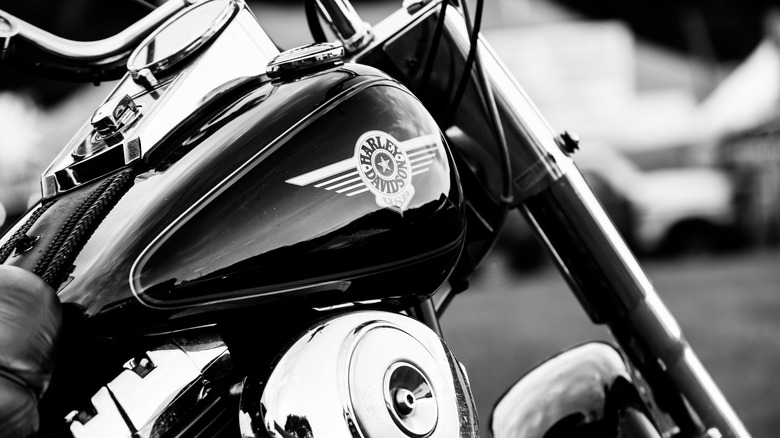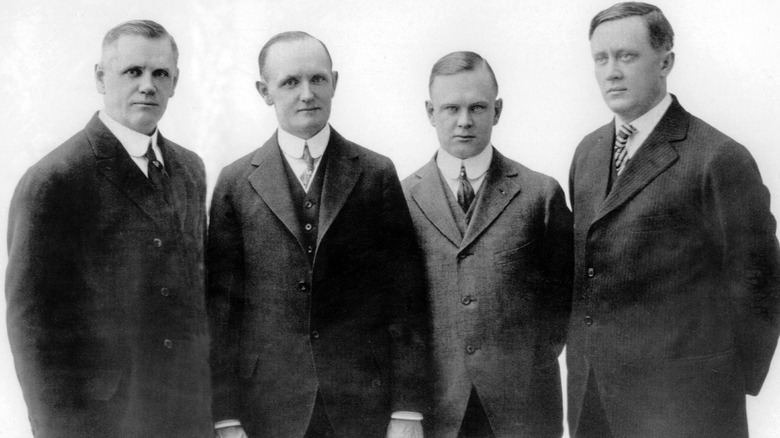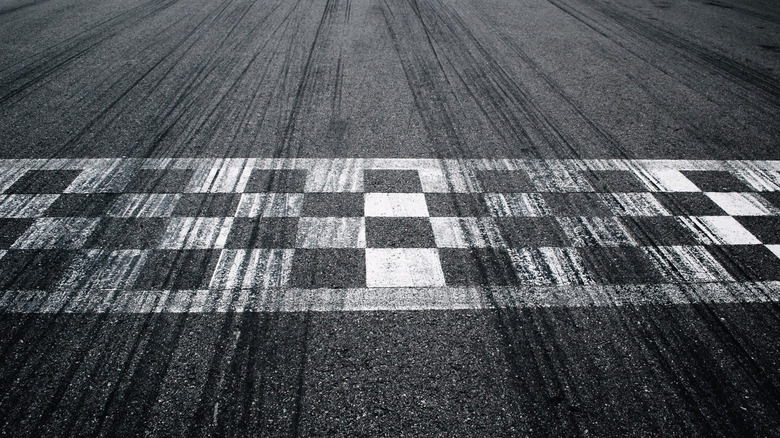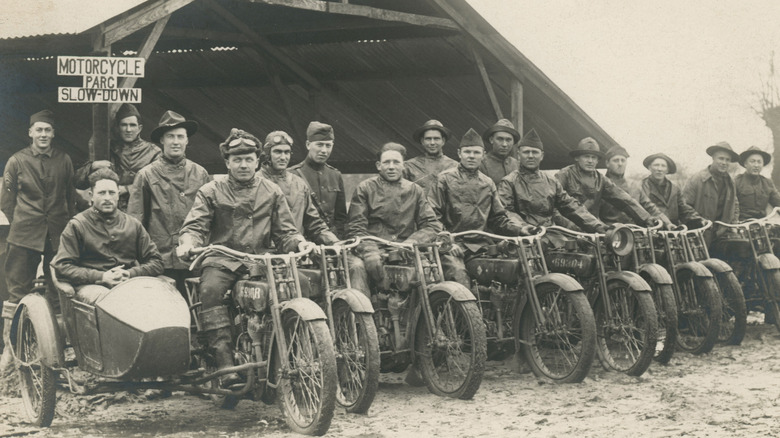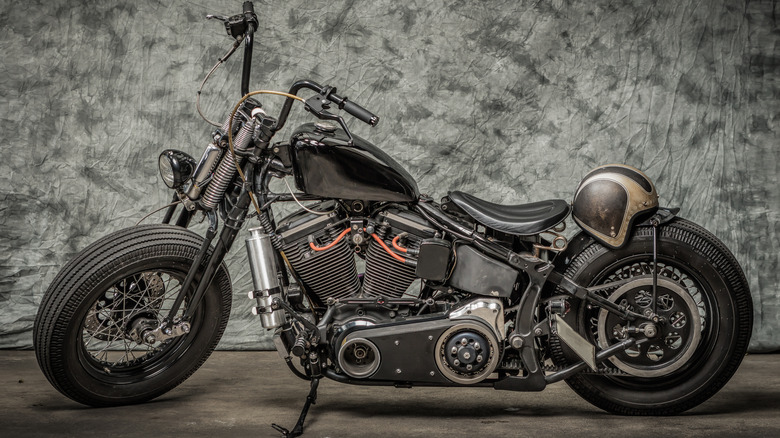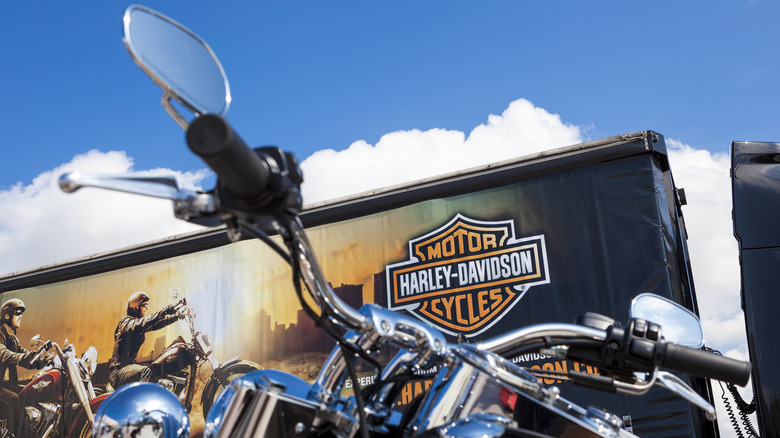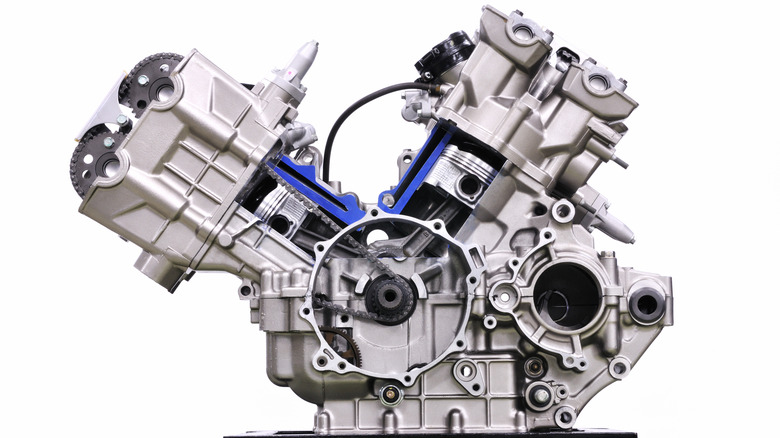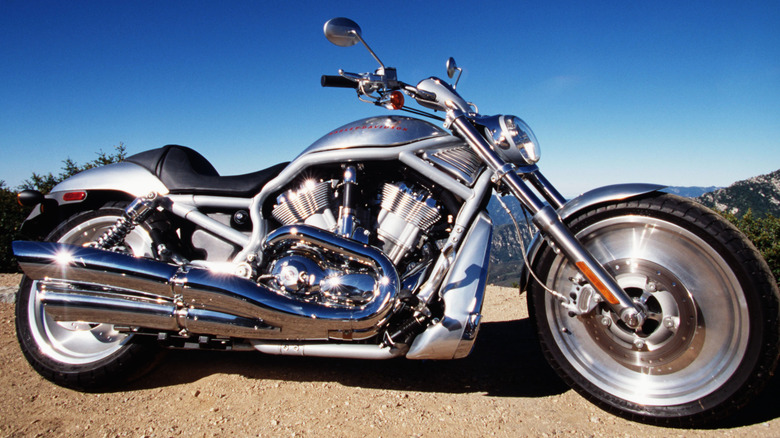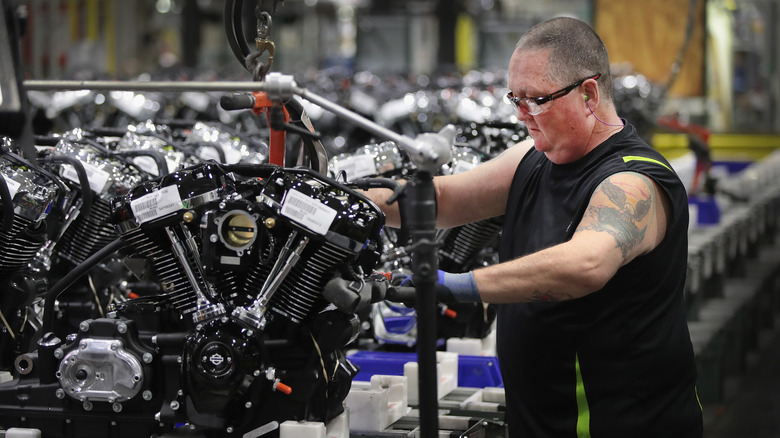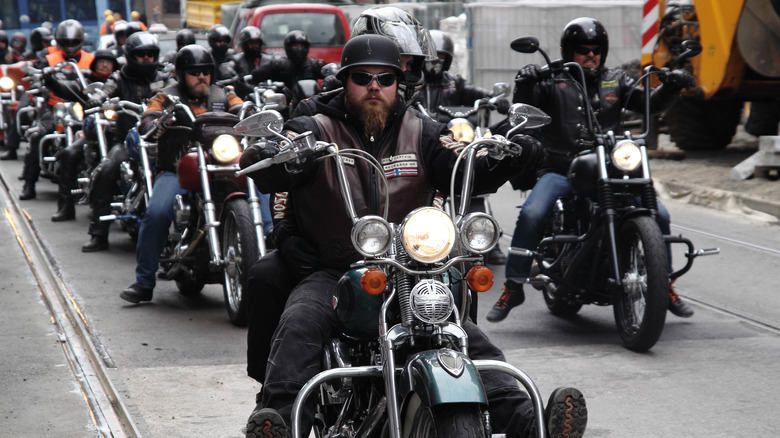10 Little-Known Facts About Harley-Davidson Motorcycles
One of the most recognizable brands in the world, Harley-Davidson has transcended the world of motorcycling to become an international corporate and cultural icon. Featured in some of the most famous motorcycle movies of all time and garnering a reputation for American attitude, Harley-Davison has developed a rabid fan base. Their distinctive styling and sound have been adopted by manufacturers worldwide, but diehards insist that there is no other bike than Harley-Davidson.
Beginning in 1903, Harley was not only one of the biggest manufacturers in the world but also one of the oldest. The internal combustion engine was still in its infancy, hardly out of the days of the horseless carriage, when enterprising mechanics began strapping it to another invention of the Industrial Revolution: the mighty motorcycle.
What is it about Harley-Davidson that inspires such devotion? Is it the thrill of hitting the open road, the rebelliousness of its wild 70s and 80s pop culture impact, the powerful engines, the distinctive sound and design? It's hard to pinpoint, but perhaps our list of 10 little-known facts about Harley-Davidson will provide a glimpse into a century and more of the iconic motorcycle.
It's more than just William Harley and Arthur Davidson
Harley-Davidson might have been called Harley, Davidson, Davidson, and Davidson. Childhood friends William Harley and Arthur Davidson are most closely associated with the company's founding, but it did not take long for Arthur's brothers, Walter and William, to join the brand.
The Davidsons lived just a few doors from the Harley home in Milwaukee, Wisconsin. William and Arthur shared an interest in bicycles and mechanics, setting them on a path to become one of the biggest motorcycle manufacturing teams ever. Developing their first bike in a 10 x 15 shack behind the Davidson house, the boys quickly made progress. A German businessman out of Chicago named C.H. Lang sold three of the original five shed-built bikes, and the company was born.
With William Harley set as the chief engineer and Arthur Davidson as the primary sales manager, the other Davidson brothers saw an opportunity to help the growing business. Walter moved from Kansas to Milwaukee to help complete the first motorcycle, later serving as President and Manager of the company after it was incorporated in 1907. William Davidson gave up his job on the Milwaukee Railroad to run the growing company's operations, purchasing tools required to upscale their manufacturing.
With so many Davidsons around, why is it Harley-Davidson and not Davidson-Harley? Aside from rolling off the tongue more easily, rumor has it that it was initially Harley's idea to strap an engine to a bicycle, resulting in his getting top billing on the marquee.
The first company to average over 100 MPH
The year was 1921, and Otto Walker was perched on a Harley-Davidson motorcycle at Fresno Speedway. The marvels of the internal combustion engine had settled into a steady hum, with daredevils pushing the limits of speed. Board-track racing, the perilous and exhilarating pinnacle of speed competition, was in full swing.
Seated on a slim Harley Davidson frame packed with a "banjo" twin-came, eight-valve V-twin (of course) engine, the Californian had come to push the limits of his machine. A World War I veteran who began racing motorcycles before the war, Walker once rode so hard during a 300-mile race that he returned on a blood-covered bike — the jarring vibrations of the primitive motorcycle caused a massive nosebleed. With that level of intensity and dedication, it was only a matter of time before Otto broke a record. And record-break, he did. In his sights: cracking the nearly mythological 100-mile-per-hour average.
Fresno Speedway was a one-mile-long board track with steeply banked turns and flat straightaways, providing racers with the opportunity to reach incredible speeds. In the single-lap time trial, Otto pushed his Harley-Davidson to its limits, achieving an average speed of 107 miles per hour. But he didn't stop there. He went on to dominate the day's racing, scoring an average of 101 miles per hour in the 50-mile race. Otto's achievements not only set new standards but also elevated Harley's status as a racing machine, paving the way for further advancements.
Harley-Davidsons saw the battlefields of Europe
Like many new technologies, the motorcycle ultimately found a role on the battlefield. World War I was the first truly industrial war, driving the invention and rise of machine guns, battle tanks, and airplanes on the killing fields of Europe. Several motorcycle manufacturers contributed to the war effort. Indian, Excelsior, and Henderson all developed bikes for the military – Indian even devoted most of its production to government contracts.
Harley-Davidson jumped into the fray with a military model based on their J-series motorcycle. Sporting a 61 cubic inch F-head motor producing between 8 and 15 horsepower, the Harleys were not just there to ferry around couriers. Equipped with sidecars and machine guns, they served on the front lines as part of relatively fast and maneuverable mobile infantry units meant to take the attack to the enemy. They also proved valuable in scouting missions, casualty extraction, and convoy protection.
Ultimately, Harley-Davidson built over 20,000 bikes for the war effort. Aside from serving as a brutal proving ground for advanced technology, the battle bike impressed veterans, many of whom returned home to buy their own civilian models. Harley also trained mechanics in a program that birthed Harley-Davidson University in the post-war peace, an organization that continues to train mechanics to this day.
Harley-Davidson has used the same engine configuration since 1909
One of Harley-Davidson's knocks is that it uses old technology. When you consider that the company has been in operation for more than 12 decades, that doesn't seem so surprising. The fact is that Harley has been using essentially the same configuration for its motors since 1909.
Long after Japanese and European manufacturers introduced all forms of two- four- six- and even eight-cylinder engines, Harley stuck to its tried-and-true V-twin design. The very first Harley-Davidsons were little more than internal combustion bicycles. The first prototype sported a 10-cubic inch single-cylinder engine producing two horsepower. But by the beginning of the following decade, they had struck upon the engine that would carry them through the millennium.
In 1909, Harley introduced its first V-twin, a 50 cubic-inch engine producing seven horsepower. By 1911, it introduced a V-twin engine known as the F-head. There were two versions: a 61 cubic-inch and a 74 cubic-inch, with the larger engine producing as much as 24 horsepower. Those are rookie numbers by today's standards, but imagine being a Harley fan back in the day and watching as your favorite bike gained 12 times more power over a decade.
Obviously, that puny F-head is far from the powerful engines Harley packs today, but the very roots remain the same: Harley-Davidson has seldom strayed from the formula that took it to the top.
Harley tried to patent their trademark sound
Potato-potato-potato. Any Harley rider (or their neighbors) can identify the distinctive sound of a Harley-Davidson. Echoing the muscular promise of the glory days of muscle cars, the V-twin thrum has often been replicated, seldom duplicated, and closely linked with the Harley-Davidson brand — so much so that Harley sought to protect the sound legally.
In the early 1990s, Harley sought to protect several design characteristics they considered distinctive. The targeted protections included teardrop-shaped gas tanks, the curved angle of the fenders, the overall bike shape, and that potato-potato-potato sound. Harley wanted to stifle competition from Japanese motorcycle companies like Honda and Yamaha, which were developing their own V-twin road machines. But they faced an uphill battle. Of the nearly million trademarks registered by the U.S. Patent and Trademark Office, only a few dozen are sounds. These include the Law and Order chimes, the MGM lion's roar, and the Mister Softee ice cream jingle.
Proving the sound unique to their engines proved more expensive than executives thought it was worth. After sinking thousands of dollars of legal fees into their pitch, Harley Davidson gave up the fight in mid-2000 (via Los Angeles Times). Though they failed to achieve federal safeguards, the lawsuit raised awareness of their claim (regardless of whether people found it ridiculous or reasonable) enough that everyone associates the idiosyncratic thump of Harley with that sweet, sweet potato.
The distinctive sound is no accident
It's no wonder that Harley-Davidson thought their distinctive sound was worth protecting. The uneven rumble is no accident. Harley has gone to great lengths to keep their bikes sounding the same, even long after technology dictated it may be unwise.
The V-twin is not so common these days. Most manufacturers that still use a V-twin use a more effectively cooled 90-degree configuration. But there is a good reason Harley sticks to 45 degrees — it facilitates that trademark (not literally, of course) sound. Most twin-cylinder engines use a pair of pins to connect their crankshaft to their piston's connecting rods. The result is an exhaust rotation on every other revolution, smoothing out the engine with symmetrical ignition. But not Harley; their unsyncopated rumble comes primarily from using a single pin to attach both pistons to the crank. When the first cylinder fires, the second cylinder has to wait until that connecting rod has rotated through 88% of a crankshaft revolution to fire; then, the first cylinder cannot fire again until the crank has rotated through 112% of its revolution. The result is the characteristic rumble Harley fans love.
Harley initially introduced the single-pin crankshaft connector in a quest to simplify engine design, which ultimately saved money. The unintended upshot was an engine with a deeper exhaust note, an engine that thrums powerfully at speed, and a unique rumble that has become synonymous with the brand.
Harley & Porsche
The two legendary automotive manufacturers don't usually attract the same fans or even appear in the same sentence. One is a European builder legendary for adapting the height of technology to its road-racing cars, while the other is an American motorcycle company that is as famous for its branding as it is for its bikes.
In the 1980s and 90s, Harley's reputation was beginning to cool. Japanese motorcycles, with their high revs and water-cooled technology, had taken over the streets, and Harley fans complained that their beloved bike not only couldn't keep up but wasn't even a modern piece of technology.
Enter Porsche. Harley turned to the German company to help revolutionize its performance. Porsche took the 60-degree V-twin developed for the VR1000 superbike, detuned it, increased displacement to 1,131 cubic centimeters, and voila, the modern Harley Davidson was born in the form of the polarizing V-Rod model. Harley discontinued the V-Rod in 2018, but they remain proof of the collaboration between the unlikely bedfellows.
Harley-Davidson has won road racing championships
The pinnacle of road racing on 250 2-strokes is not usually what comes to mind when considering Harley-Davidson. Known for heavy bikes with distinctive styling, Harley has rarely made its way into the world of race competition. It may be surprising to learn that Harley-Davidson held three Grand Prix World Championships between 1974 and 1976.
In 1960, Harley-Davidson purchased fifty percent ownership of Italian aircraft and motorcycle manufacturer Aermacchi. The purchase gave Harley access to a stable of road racing bikes, including the Ala D'oro, a single-cylinder, 4-stroke, 250 cc machine known as the Sprint in the United States. The problem was the Sprint was being manhandled on the track by Japanese 2-strokes. In response, the Italians engineered a 2-stroke 250 cc machine by melding a pair of 125cc cylinders together. By 1974, not only was the bike already performing well on the track, falling a single point shy of the championship in 1972, but Harley owned Aermacchi's entire motorcycle division, meaning it would race under the Harley-Davidson banner.
Hary tapped Italian rider Walter Villa to fill the saddle for the 1974 season, and he did not disappoint. Villa and Harley went on to dominate the class for the following three years, scoring back-to-back championships in 1974 and 1975 and a third in the 350 class in 1976. Despite the successes, Harley bowed out of road racing after they sold the division in 1978.
Harley became the largest motorcycle manufacturer in the world in less than 20 years
From humble beginnings in a backyard shed to the biggest manufacturer in less than two decades, Harley's initial growth was nothing short of meteoric. We have already examined the company's founding, but as it turns out, Harley slipped into the motorcycle manufacturing stream near its source.
The first few years saw Harley-Davidsons garner a reputation for rugged reliability. Arthur Davidson earned a perfect score in the 1907 American Motorcyclists Endurance and Reliability Contest. This got the company its first of many police contracts. More affordable and less complex than cars in the pre-Model-T days, Harley appealed to rural customers lacking deep pockets. Prior to the sales boost provided by America's entry into World War I, Harley was already selling its models to the Japanese military.
Bolstered by the explosion of veterans who had experienced Harley-Davidson during the war, Harley set its sights on postwar success. By 1920, they were the biggest producer of motorcycles in the world; that signature rumble could be heard in 67 countries.
The world's oldest Harley club formed in the Czech Republic
With the iconic bike a favorite of cycle clubs swarming North America's highways, you'd think the first-ever edition originated in America's heartland. But that honor is reserved for an unexpected contributor.
Bohumel Turek, a Czech motorcycle racer and Harley importer was getting married. His fiancee knew what she was getting into. It was 1927, and his fiancee, Ruzena Nedvedova, had ridden the backseat on a 1,000-kilometer race prior to their wedding. And like most motorcyclists, many of Turek's friends were of the same ilk.
Between 60 and 90 bikers joined Bohumel and Ruzena on their blessed day, escorting guests to the party on their Harley-Davidsons and just generally having a grand old time. Realizing how fun it was to share their passion with other like-minded people, they resolved to meet as a group more often. By 1928, they had grown to 150 members and officially registered with the Interior Ministry as Harley Club Prague. The group survived a tumultuous 20th century and organizes events and meetings to this day.
